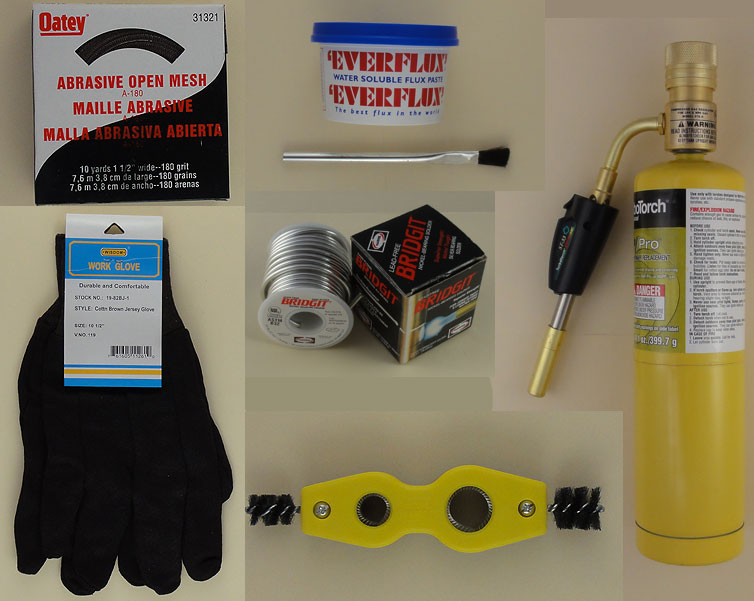toolsrme said:
(2) The reason to heat joints and not pipe is that, duh!, metal expands when heated. If you heat the pipe and not the joint then you're making the pipe expand while the joint stays relatively cool. That makes it hard for the solder to be sucked into the area between the pipe and the joint. If you remember this, then it is always easy to figure out what needs to be heated on, say, a street tee.
hj said:
WRONG, WRONG, WRONG1 The reason to heat the fitting and not the pipe is that capillary attraction pulls the solder to the hottest part of the joint, which should be the bottom of the socket where the end of the tubing is. If expansion were a factor then heating the tubing would make the joint even tighter which would improve the solder flow, and heating the fitting would create a looser joint which would not have good solder flow.
HJ, I am not a plumber and I deeply appreciate your patience and knowledge.
I've been doing some online research and, I must admit, that I have learned a bunch and I stand corrected on several things.
It appears that the strength of capillary action is inversely proportional to the diameter of the "hole". Thus, theoretically, a tighter fit would yeild a stronger sucking of solder.
From
http://en.wikipedia.org/wiki/Capillary_action we see that the height (strength) of a capillary action is
2 x T x cos(theta)
-----
rho x g x r
where r is the radius of the tube and is, really, the only relvant variable.
r is akin to the distance between the two pieces of copper (approximately .004 inches) and is not the radius of the pipe (e.g. half or three-quarter inches).
Clearly this formula breaks down where r gets too small. Otherwise we could make a tiny hole in a glass tube and lift water an infinite distance.
Redwood trees, for instance, have limited heights (about 400 feet) because capillary action and osmosis are limited.
I have no idea how small is "too small" in a plumbing application.
Nonetheless, if you heat the pipe rather than the fitting then there will be a very tight fit and it would prevent or slow the solder. Something like trying to make the redwood taller than 400 feet.
toolsrme said:
(3) I've had success (about 40%) reheating a leaky fitting if I can drain the water out of the pipe. Using the JTH-7 I manage to get the interior of the pipe to dry.
hj said:
That is a marginal cure, since once the water touches the copper, and the flux is either burned off or washes out of the joint, the copper will oxide. Therefore, since you cannot clean or flux the bad spot, you have to depend on luck for the solder to make a good seal, but you could just be closing the surface of the leak where you can see it.
I should have put in the step of applying flux to the area where the fitting meets the pipe.
I've seen my licensed plumber use this trick. I have no idea why flux is needed or why the trick sometimes works.
toolsrme said:
(4) I use a lot of flux. As I read somewhere: "Flux is your friend." As another poster noted, putting too much on won't help ... but it won't hurt, either. It also makes it easier to see whether you've fluxed the joint
hj said:
I would hope you flux the joints as you put them together so you don't have to "see whether you've fluxed the joint". More flux just means a bit more time before you evaporate it so the soldering can begin.
After a little research I have learned that applying too much flux is bad, bad, bad.
Applying too much flux can cause corrosion. That's why you're supposed to wipe down a joint with a damp cloth: to remove excess flux. I'm going to go around my house and wipe down my joints now that I know this. It's been about 5 months since I've started doing the plumbing in this renovation. I hope I've not done a lot of permanent damage.
The point about putting on "too much" is that too much is far better than none at all.
If you work in dark places then it is sometimes hard to see and/or remember which parts have been fluxed.
In terms of flux evaporating so that the soldering can begin: The solder and flux and the copper interact. If the flux wasn't there (it evaporated) then the copper would oxidize and you'd have a bad joint.
Geez, there is so much to learn.
I apologize to everyone for my misinformation.
Lastly, in my researches I've seen the following URL:
www.copper.org / copperhome / DIY / do it yourself _ soldering school . html
(Could someone tell me why it's impossible to put in a URL in this forum? Why do asterisks show up when I put in a long URL? To get to the URL you'll need to remove all the blanks. Grr.)
Anyone want to comment on whether they're right about heating the pipe and/or any other comments about their technique.


